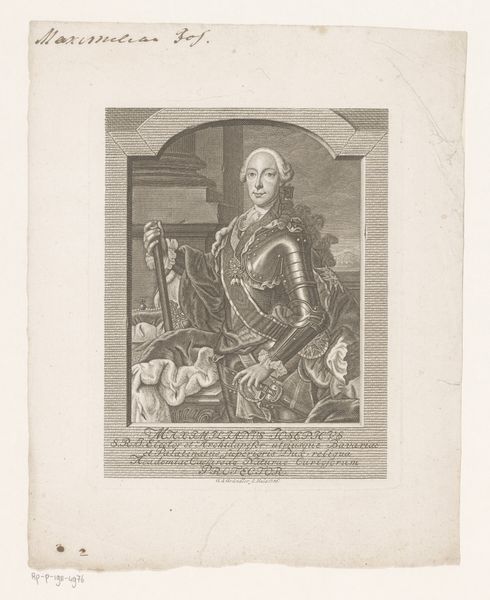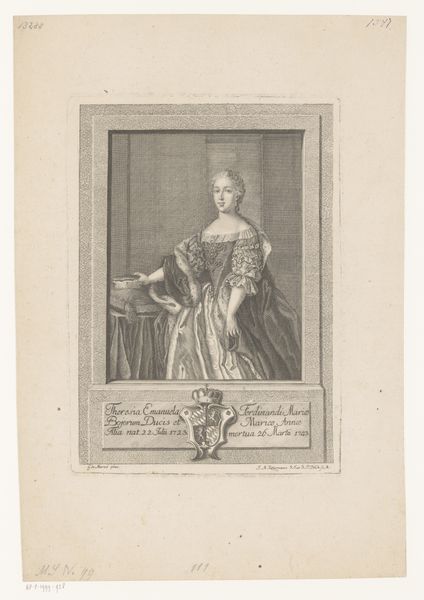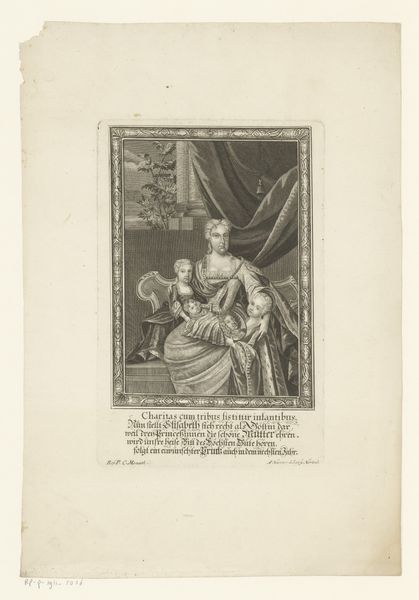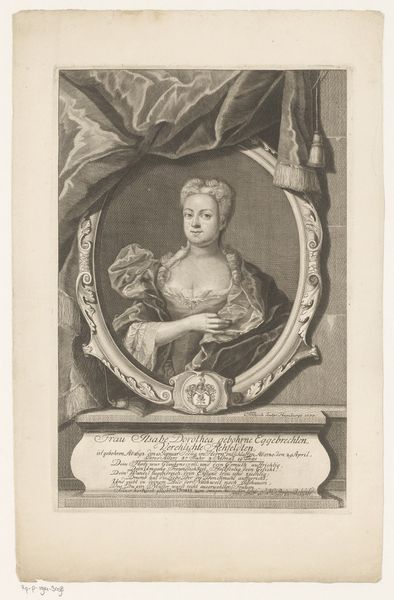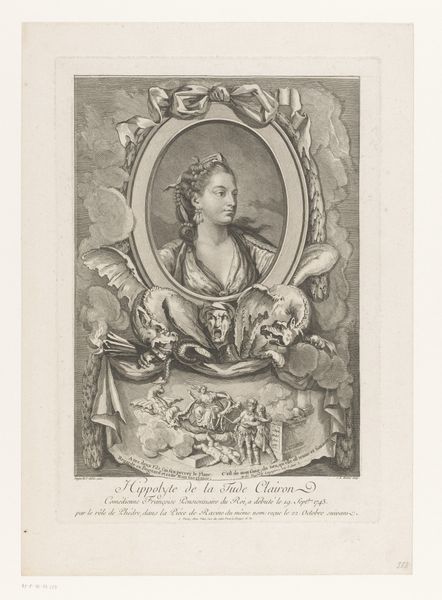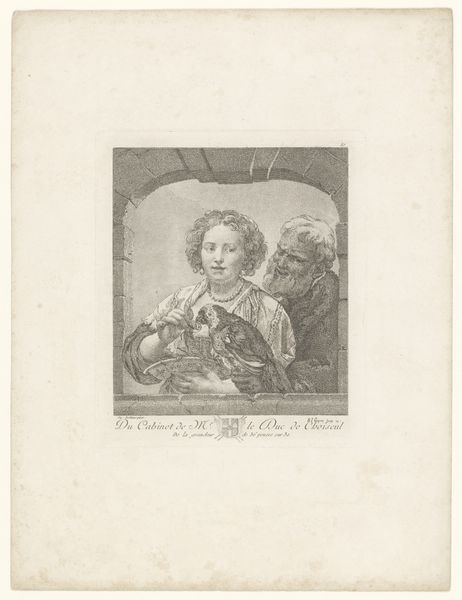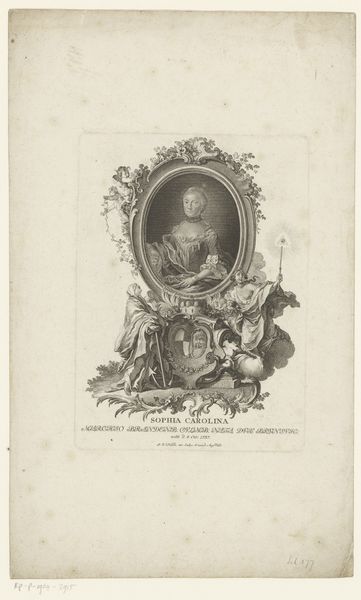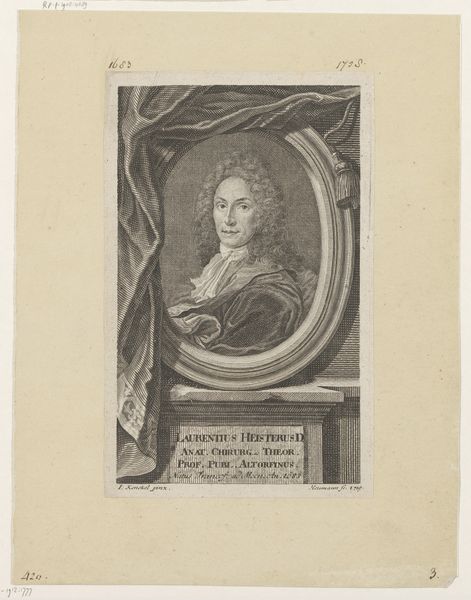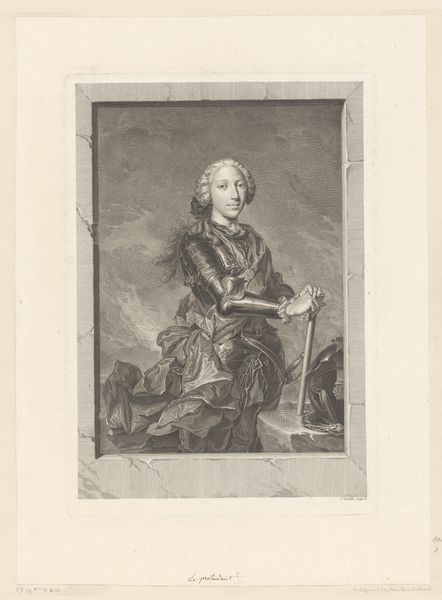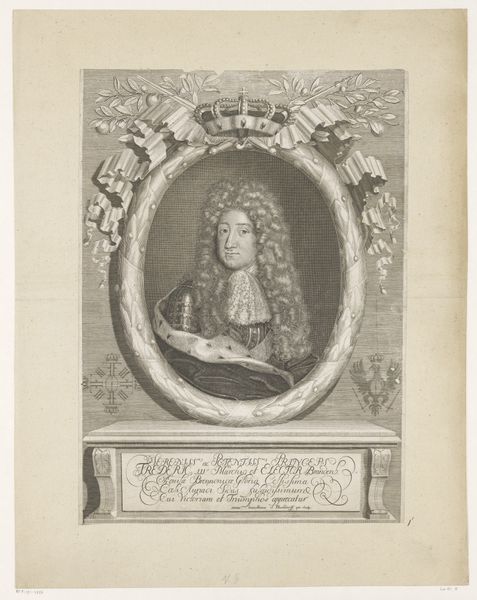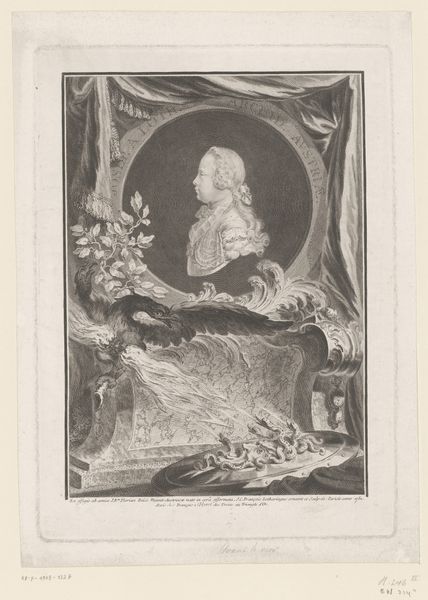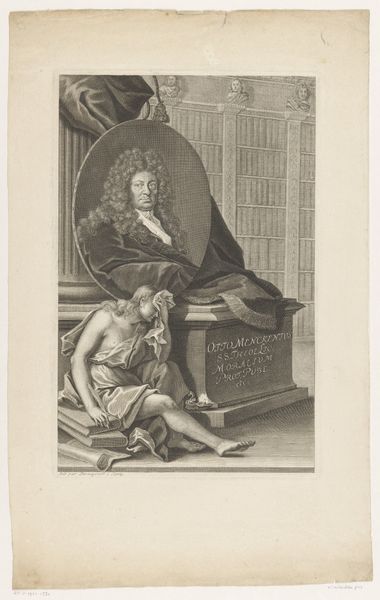
print, engraving
#
portrait
#
baroque
# print
#
history-painting
#
engraving
Dimensions: height 358 mm, width 275 mm
Copyright: Rijks Museum: Open Domain
Curator: It strikes me immediately – it's almost dreamlike. Look at the city receding into the distance, all framed by chubby cherubs. But her gaze? Solid, direct. Quite a contrast. Editor: Absolutely. What you're perceiving is a meticulously constructed piece. We're looking at an engraving of Rosina Elisabeth Bose, made sometime between 1722 and 1738 by Johann August Corvinus. You can find it here at the Rijksmuseum. Curator: An engraving... It’s funny, that medium gives it a sense of precision, of order. The artist uses this to convey both a formal portrait but also... these floating babies. I find that delightful. Editor: Precisely, and this combination isn't accidental. These elements serve to locate Rosina within a certain historical context. Note the symbols of power, the architectural details in the background; and, more specifically, how she's posed above representations of History and the Arts. This positions her, or rather, the subject is consciously positioned, as a patron of knowledge and civility. Curator: Oh! Patronage! The details, though! That languid figure reclining on the left looks positively bored out of her skull. Does she realize she is one-half of the symbolic foundation supporting the woman of the hour? I do feel for her, though. Patronage might have been deadly dull work. Editor: And in whose service, exactly, were those “deadly dull” deeds done? Consider what it would mean to question those systems that are in place here—we can imagine how many avenues become limited in a world operating like that one. It serves as a subtle reinforcement of power dynamics. Even her gaze...is she empowered, or is she scrutinized? Curator: I think... both. Maybe it’s an understanding. She knows the terms, plays the part, but holds her own. Perhaps it's the quiet power in her gaze. Or perhaps I just really like engravings with chubby cherubs. Editor: It’s fascinating how those contrasting elements can create so much dialogue, still today, centuries after the print was made. Curator: Isn’t it, though? Even if that dialogue is just me imagining philosophical breakdowns in baroque allegories...
Comments
No comments
Be the first to comment and join the conversation on the ultimate creative platform.
